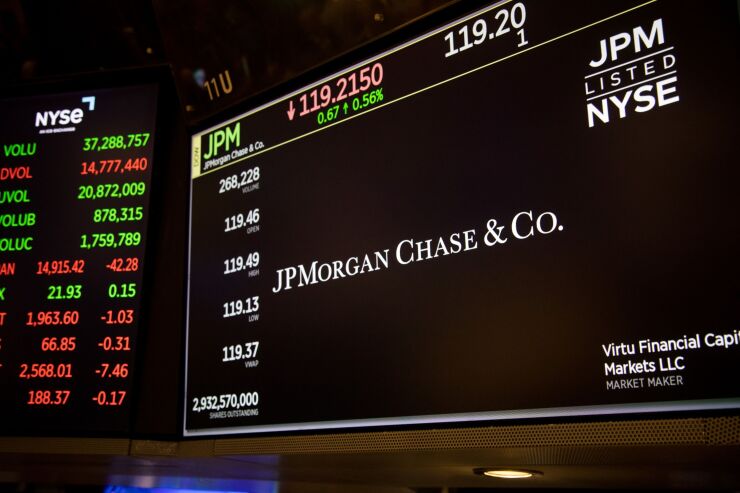JPMorgan Chase is in the middle of a series of investments and product rollouts in its payments businesses, stemming from a need to counter the growing threat of easily accessible apps from nimble technology companies.
"With the rise of omnichannel commerce, the distinction between card-present and card-not-present, or e-commerce, is eroding," said Max Neukirchen, head of payments and commerce solutions at JPMorgan. "For example, customers want to buy at home online, and then return items in the store."
The bank's most recent move was an agreement to acquire the merchant technology firm
JPMorgan is trying to use its huge scale — the bank processes more than
"Clients are looking for not just card acquiring, but also value-added services as well," Neukirchen said. "So all of the tasks associated with payments, such as fraud prevention, tokenization and checkout experience, are all part of that."
Despite its payments processing volume, the bank is concerned that fintechs are creating a competitive gap. During
"We maintained our market share, [but] we didn't grow revenues," Georgakopoulos told investors at the May event.
The Renovite deal gives the bank access to technology that makes it easier for merchants or small businesses to add digital payment products or merchant services, helping JPMorgan battle firms such as Stripe, PayPal and Block.
"A lot of the technology in the card acquiring space is 25 to 35 years old, and that is consistent across banks and the big acquirers," said Mike Blandina, managing director and global head of payments technology for JPMorgan Chase, saying Renovite's hosted technology model will enable upgrades with less IT work. "So part of what we're looking at is to be fully cloud native."
Renovite enables JPMorgan to offer new payment methods without complex coding, according to Blandina.
"We can launch in new countries and integrate with new payment options," Blandina said. "The ultimate benefit to cloud-native tech is it's all new, all built in the last three or four years. There's no legacy to this infrastructure."
JPMorgan is looking to expand merchant acquiring in Europe, Latin American, Asia Pacific and other regions.
"A number of counties have come online in the past 12 to 24 months, and there are more coming," Neukirchen said. "It's critical that you offer the local payment methods."
Beyond the Renovite deal, JPMorgan is reportedly considering an
JPMorgan has additionally agreed to acquire a 49% stake in
And the bank recently formed
The Onyx Digital Assets unit is the largest blockchain and digital asset team at a U.S. bank, and a window into what other large banks are likely to do in the future.
"We want to ensure we have a modern architecture that is cloud-based and enables easy integration with APIs," Neukirchen said.
Demand for financial apps is increasing, either from fintechs, banks or digital finance platforms accessed through bank relationships. The share of U.S. consumers using digital financial apps — though not necessarily through fintechs alone — to manage their finances leapt to 88% in 2021 from 58% in 2020, according to a survey by
That's higher than consumers who use video streaming (78%) and social media (72%). Consumers also say financial technology apps save time (93%) and money (73%) and reduce financial stress (71%). Eighty percent of consumers say it's important that their banks connect to financial apps. Fifty-seven percent report using a payment app, and 51% said they use a savings or investment app.
JPMorgan's partnerships and investments can produce joint offerings that are more user-friendly and better equipped to meet customers' and merchants' ever-changing needs, according to Vijay Sondhi, chief executive of the payment processor NMI. Earlier in his career, Sondhi was a senior executive at Visa tasked with launching the card brand's One-Market Innovation Center.
Merchant demand for faster onboarding and processing will force banks to engage in acquisitions or partnerships to provide more flexible technology, Sondhi said.
"Other bank giants can look at the recent acquisition strategy from JPMorgan and consider how they can build out their own payments infrastructure to accept payments more quickly and take on the likes of Stripe and Block," Sondhi said.
These fintechs are able to build their services directly into a mobile app, where younger consumers are already spending the majority of their time, according to Sondhi. Seventy-five percent of Generation Z consumers use smartphones as a primary device, according to
"The fintech's ability and dedication to provide services for the end consumer in today's digital world allows them to take customers away from banks," Sondhi said.







